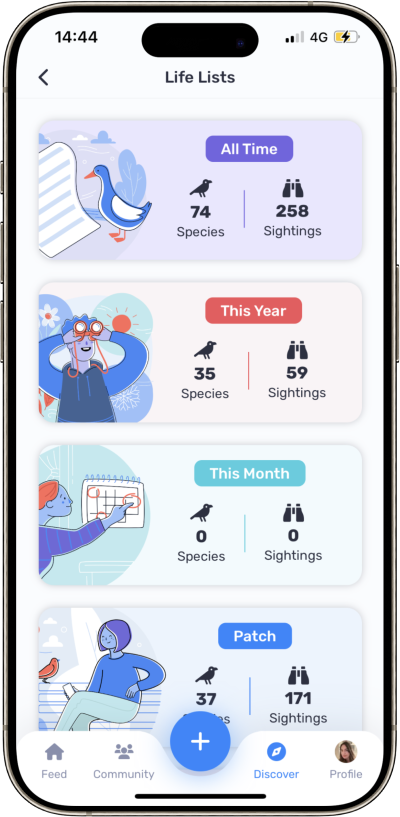
Tennessee Warbler
Leiothlypis peregrina
The Tennessee warbler, a small bird of the New World warbler family, is a modestly adorned species. It measures approximately 11.5 cm in length, with a wingspan nearing 19.69 cm, and tips the scales at roughly 10 grams. The breeding male is characterized by an olive back, shoulders, rump, and vent, with flight feathers of a brownish-black hue. A slate grey adorns its neck, crown, and eyeline, while its underside is a muted gray-white. Females echo the males in pattern but are tinged with yellow and olive, particularly on the underside, presenting a much duller appearance. Both sexes boast long wings, a short tail, and a thin, pointy bill, with white undertail coverts persisting throughout the year.
Identification Tips
When identifying the Tennessee warbler, look for the long wings and short tail, as well as the thin, pointy bill. The breeding male's slate gray neck, crown, and eyeline contrast with its olive back and gray-white underside. Females and juveniles are duller with yellow and olive tinges. In fall and winter, adult males show more yellow below, and the gray areas turn olive green. The yellow supraocular line is a distinctive feature on the face.
Habitat
The Tennessee warbler is partial to coniferous forests, mixed conifer-deciduous woodlands, early successional habitats, and boreal bogs. These environments provide the resources necessary for its survival and breeding.
Distribution
This warbler breeds from the Adirondack Mountains in New York to northern Vermont, New Hampshire, Maine, and across much of Canada. It is also found in northeast Minnesota and northern Michigan. Come winter, it migrates to southern Central America, the Caribbean, and northern regions of Colombia and Venezuela, with some venturing as far as Ecuador. It is named after Tennessee, a place it frequents during migration and is a rare visitor to western Europe.
Behaviour
The Tennessee warbler exhibits a nervous and quick demeanor while foraging, creeping along branches at various heights. It is solitary during nesting but joins mixed flocks post-breeding. Its population fluctuates with the abundance of the spruce budworm, a favored food source.
Breeding
Females construct a cup-shaped nest from dried grasses and moss, lined with finer materials, either on the ground or above a bog. They lay 4–7 white eggs adorned with brown splotches.
Similar Species
The Tennessee warbler can be mistaken for the female black-throated blue warbler, which has a darker cheek and two white wing spots. It also resembles the red-eyed vireo, which is larger, moves more deliberately, and sings almost constantly. The orange-crowned warbler is another look-alike but lacks the white eyebrow, is greyer-brown above, and has yellow undertail coverts.
Diet and Feeding
Primarily insectivorous, the Tennessee warbler has a particular appetite for the spruce budworm. It also consumes flower nectar, fruit, and some seeds, adapting its diet to the available resources.
Conservation status
The Tennessee warbler is currently listed as Least Concern by the IUCN, indicating a stable population without immediate threats to its survival.





























































